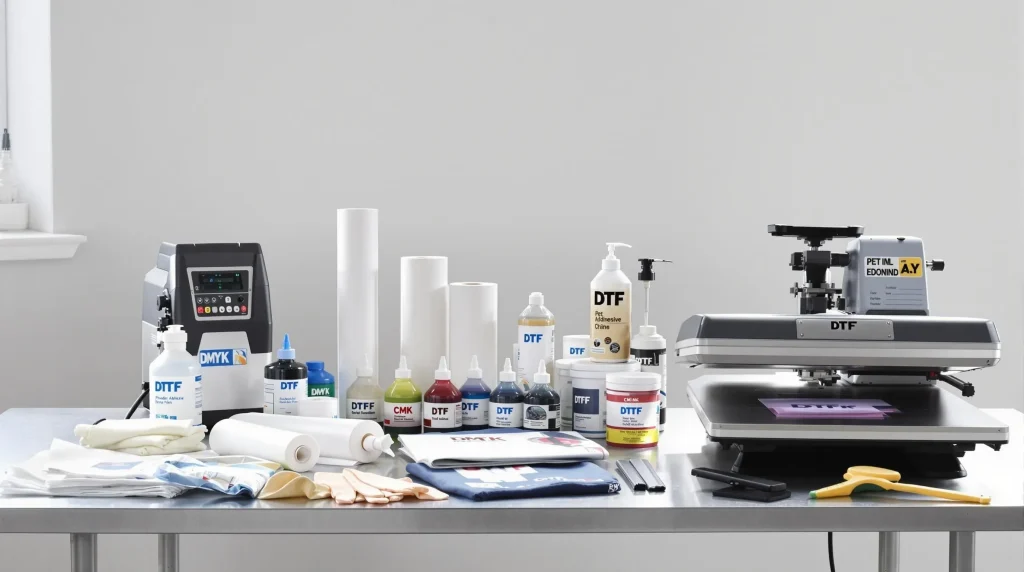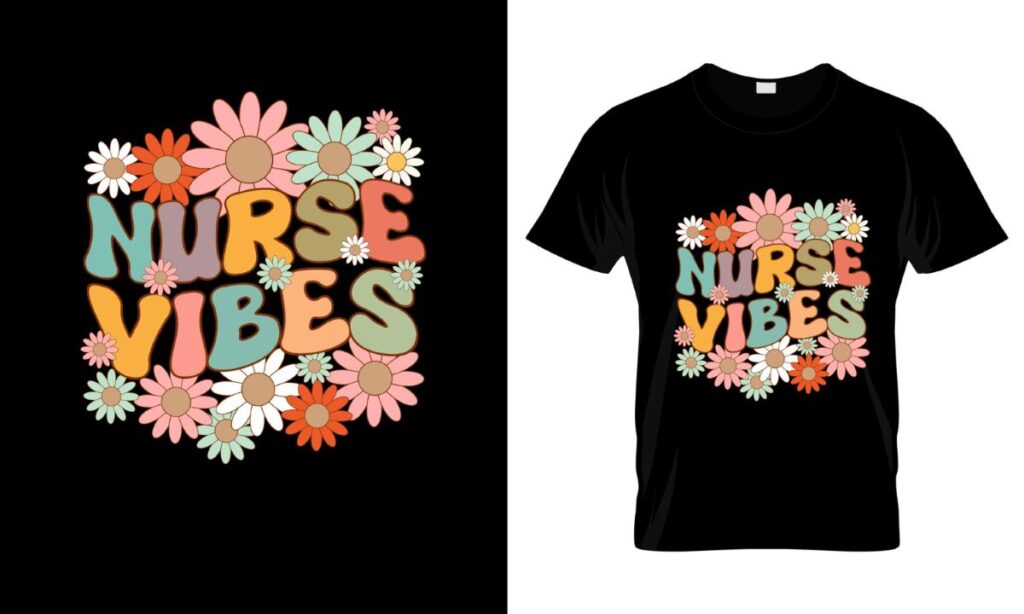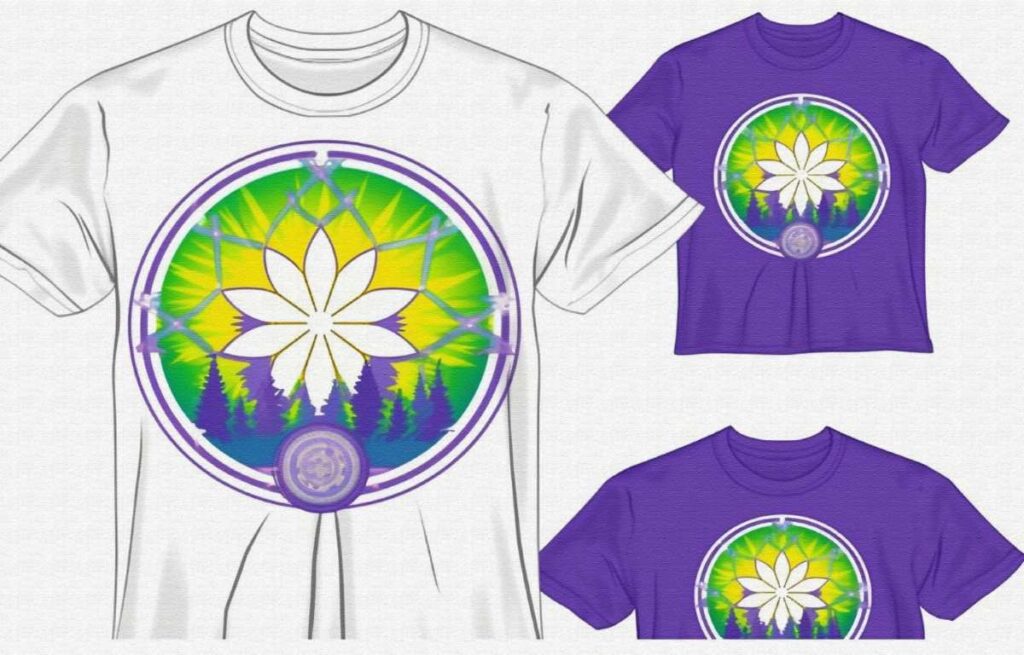When diving into the world of DTF supplies checklist, it’s essential to understand how having the right tools can elevate your Direct to Film printing experience. This innovative method allows for the application of bright and intricate designs directly onto various fabrics. To achieve stunning results, you’ll need to gather quality DTF printing supplies such as a reliable DTF printer, vibrant DTF inks, and specialized DTF transfer film. Each element plays a critical role in ensuring that your prints are not only visually appealing but also durable and long-lasting. In this article, we’ll explore everything you need to successfully navigate your DTF printing journey, from essential supplies to maintenance tips.
Direct to Film printing, often referred to as DTF, is revolutionizing the garment printing industry by providing an easier, more efficient method for transferring designs onto fabric. This cutting-edge technique allows for the seamless integration of vivid colors and detailed artwork onto a variety of materials. To fully capitalize on this technology, a well-curated checklist of DTF printing materials is vital for any printer aiming for excellent results. Packed with essential components such as high-quality printer models, specialized inks, and transfer films, staying organized will ensure your printing processes run smoothly. As the demand for custom apparel continues to grow, understanding the ins and outs of DTF supplies comes as a significant advantage.
Key Components of DTF Printing Supplies
The success of Direct to Film (DTF) printing hinges on a coherent collection of supplies that work in tandem to ensure quality output. Among the foundational components is the DTF printer itself. Selecting a printer specifically engineered for DTF inks ensures optimal performance and quality. Printers compatible with modified Epson technology are particularly praised for their ability to deliver vibrant colors and high-resolution prints. Alongside the printer, DTF inks play a paramount role. Quality water-based inks, renowned for their adhesion and vibrancy, not only affect the visual appeal of the print but also its longevity. Choosing the right ink brand can make a significant difference in print durability and brilliance, thus establishing the groundwork for a successful DTF operation.
Moreover, the DTF transfer film is another essential element. High-quality PET film, preferably with a matte finish, is ideal for enhancing ink absorption, thus contributing considerably to the overall print quality. When creating your DTF supplies checklist, don’t overlook the importance of adhesive powder; a hot-melt adhesive ensures a strong bond between the printed ink and the fabric. With these key components working effectively, experiments with various combinations of fabrics can yield impressive results, ultimately elevating the standards of your printing endeavors.
Choosing the Right DTF Printer
When diving into Direct to Film printing, the choice of printer is a critical decision that can impact your entire operation. An ideal DTF printer is specifically designed to accommodate DTF inks, enabling seamless compatibility which is vital for achieving high-quality prints. Brands like Epson are often modified specifically for this purpose, and they are equipped to handle the specific film sizes you might encounter in the workflow. Moreover, beyond just functionality, the printer’s specifications, such as resolution and speed, are important variables that can influence production capacity and overall efficiency in meeting customer demands.
Opting for a printer that offers precise color reproduction is crucial for businesses aiming to deliver intricate designs with vivid hues. Paying attention to print head technology can prevent issues like clogging, especially when using specialized DTF inks. Regular maintenance and the right selections in your checklist can help minimize downtime and enhance operational performance. Thus, investing time in selecting the perfect printer will not only facilitate a smoother printing process but also assure customers of consistently high-quality outputs.
Inks: The Heart of DTF Printing
DTF inks are fundamentally what differentiate this printing method from traditional approaches. High-quality water-based DTF inks, such as those from reputable brands like Kothari and Sunangel, are indispensable for achieving the intense colors and excellent adhesion necessary for successful prints. The formulation of these inks ensures that they bond well with various fabrics, providing durability and resistance to washing and wear. As ink quality directly correlates with print results, investing in premium inks should be a priority on your DTF supplies checklist.
Moreover, one of the unique attributes of DTF inks is their soft hand-feel after curing, which increases the desirability of printed garments. This capability allows printers to handle multiple fabric types—from cotton to polyester blends—providing more versatility in the products they can offer. Incorporating high-standard inks into your method not only ensures satisfaction among clients but also enhances brand reputation. Therefore, always aim to choose inks that meet industry standards and have proven results among professional users.
Understanding DTF Transfer Film
The DTF transfer film acts as the medium upon which your design is printed before being transferred to the fabric. The choice of film can dramatically affect the final print quality; hence, selecting high-quality PET film is crucial. A matte finish on the transfer film not only improves ink absorption but also minimizes the chances of print distortion during the transfer process. In comparison to glossy films, matte films ensure a more vibrant color payoff and superior durability, making them the preferred choice for most DTF printing applications.
Moreover, scanning through potential DTF transfer film options opens up numerous benefits, such as increased washability and resistance to fading over time. Printing with such films ensures that the final product retains its brilliance and clarity, resisting the challenges posed by everyday wear and washing. Thus, keeping quality transfer film on your DTF supplies checklist is non-negotiable, as it lays the groundwork for the durability and aesthetic appeal of your final product.
Heat Press: A Critical Tool for Successful Transfers
In DTF printing, the heat press is an indispensable tool that plays a vital role in achieving optimal results. A reliable heat press allows for precise temperature and pressure control, which is essential when transferring designs from the film to the fabric. Different materials might require distinct pressure settings, so having a heat press that offers adjustable options can significantly enhance versatility and effectiveness. Invest in a quality heat press that ensures consistent results across various fabric types, from lightweight cotton to heavier polyester blends.
Additionally, understanding the importance of the heat press settings cannot be overstressed. The right combination of pressure and temperature determines whether the transfer adheres properly or whether you’ll experience issues like peeling or fading prints. Regular monitoring and calibration of your heat press will help maintain quality consistency and extend the lifespan of your equipment. Thus, featuring a solid and high-performing heat press on your DTF supplies checklist is crucial for creating long-lasting, quality printed garments.
Maintaining Equipment for Optimal DTF Printing
Just as important as selecting quality materials is maintaining your DTF printing equipment to ensure consistent performance over time. Regular cleaning and upkeep of your DTF printer are necessary to prevent clogs and malfunctions, which can disrupt production and diminish print quality. Investing in specialized cleaning supplies designed for your printer model can keep print heads functioning perfectly, allowing you to produce clear and vibrant results with each print run.
Moreover, a proactive approach to maintenance also involves regularly replacing components that show signs of wear and tear, such as ink cartridges and transfer films. Keeping a checklist of maintenance tasks can help streamline this process, ensuring your equipment remains operational and yielding high-quality prints. As you refine your DTF printing process, remember that treating your equipment with care directly correlates to the caliber of your outputs, making regular maintenance a pivotal aspect of your DTF supplies checklist.
Frequently Asked Questions
What is included in the DTF supplies checklist for effective printing?
The DTF supplies checklist includes essential items such as a DTF printer, high-quality DTF inks, DTF transfer film, adhesive powder, a reliable heat press, curing station, software solutions for design, and cleaning supplies to maintain your equipment.
How do I choose the right DTF printer for my projects?
Selecting the right DTF printer involves considering models specifically designed for DTF inks, like modified Epson printers, that can accommodate the required film size and deliver high-quality prints. Look for user reviews and professional recommendations to ensure your choice aligns with your printing needs.
Why are water-based DTF inks important in the DTF printing process?
Water-based DTF inks are crucial as they offer vibrant colors and excellent adhesion properties. Using high-quality inks directly impacts the vibrancy and durability of the final prints, making them essential for achieving professional results in DTF printing.
What type of DTF transfer film should I use?
For DTF printing, it is recommended to use high-quality PET transfer film with a matte finish. This type of film enhances ink absorption and durability, significantly improving the quality of the prints you produce.
What is the role of adhesive powder in DTF printing?
Adhesive powder, specifically hot-melt adhesive, is applied to the wet ink on the transfer film before curing. It ensures a stronger bond between the ink and the fabric, enhancing the print’s durability through washing and wear.
How does a curing station enhance DTF printing results?
A professional curing station is vital as it maintains the required temperature and speed for curing the adhesive. This equipment ensures that the ink properly bonds with the fabric, contributing to the overall quality and longevity of the DTF prints.
| Supply Item | Description |
|---|---|
| DTF Printer | Printers specifically designed for DTF inks for high-quality output, such as modified Epson printers. |
| DTF Inks | High-quality water-based inks like Kothari and Sunangel ensure vibrant colors and excellent adhesion. |
| DTF Transfer Film | High-quality PET film with a matte finish enhances ink absorption and durability. |
| Adhesive Powder | Hot-melt adhesive is required to bond ink to fabric effectively. |
| Heat Press | Reliable heat press with adjustable settings for consistent pressure across different fabrics. |
| Curing Station | Ensures proper binding of adhesive and ink during transfers. |
| Software Solutions | Design software like Adobe Illustrator is essential for preparing prints. |
| Cleaning Supplies | Specialized cleaning tools to maintain printer functionality and quality. |
Summary
The DTF Supplies Checklist is essential for anyone looking to master the art of DTF printing. This comprehensive guide provides all the necessary items, from advanced printers to high-quality ink and films, that guarantee exceptional print results. By carefully selecting and maintaining these supplies, printers can ensure their designs are not only vibrant and intricate but also durable and long-lasting. Ultimately, adhering to the DTF Supplies Checklist can significantly enhance printing capabilities, enabling businesses to thrive in the competitive custom apparel sector.



